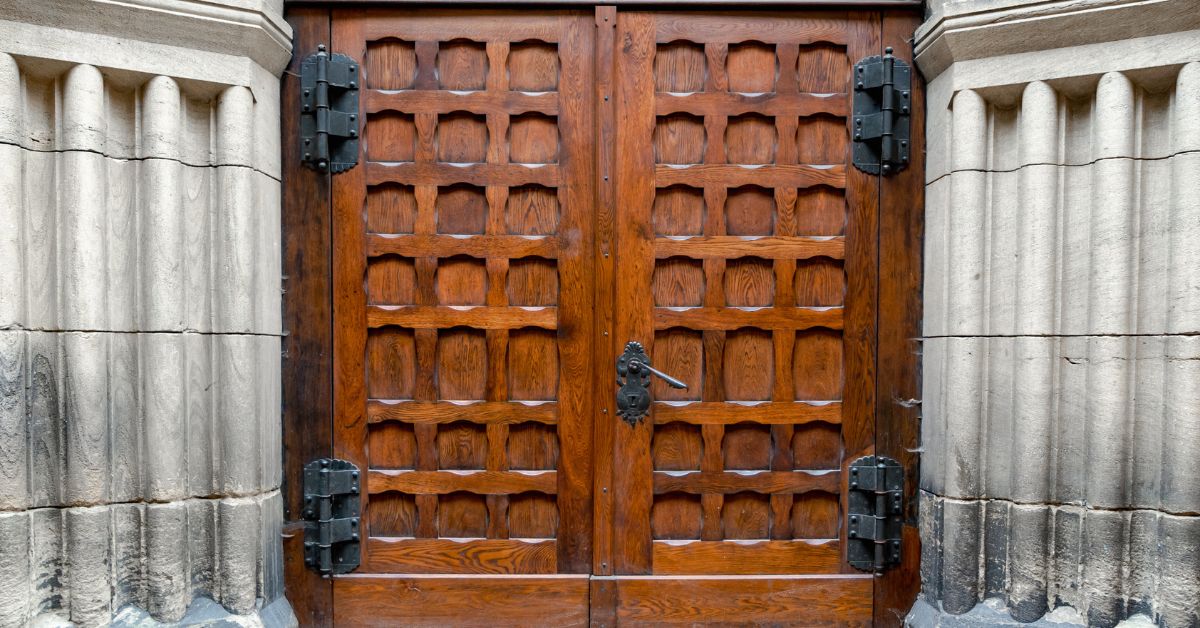History 101: The Evolution of Door Hinge Hardware

Early Use in Marketplaces and Structures
Ancient marketplaces and public structures relied on primitive pivot systems. These rudimentary mechanisms facilitated accessibility in busy environments. In cities like Rome and Athens, merchants and traders needed reliable solutions, prompting the use of durable materials.
In particular, bronze and iron were effective for high-traffic areas. Their simple designs provided the necessary functionality to support commerce. Blacksmiths designed hinges to withstand frequent opening and closing so that doorways were secure yet accessible.
Symbolism and Economic Influence
Historically, hinges played significant cultural and economic roles beyond their functional use in ancient societies. They symbolized security and prosperity, fitting for ancient marketplaces. For example, traders in Egyptian bazaars relied on sturdy hinges to secure and protect goods like grains and textiles.
Merchants also used hinges to operate The Roman Forum’s market stalls, which boasted vibrant trade activities. Hinges indicated a thriving market, often reflected in their intricate designs and quality materials.
Beyond markets, people used hinges to safeguard goods in warehouses, ensuring trade stability, as seen in Mesopotamia’s grain storage. Thus, hinges actively contributed to ancient civilizations’ economic vitality and cultural values.
Medieval Advancements in Public Buildings
Medieval Europe saw the adoption of wrought iron hinges within public buildings. These hinges catered to the needs of cathedrals and public halls, as architects designed them to support the massive wooden doors of these structures.
The presence of iron hinges in public buildings reflects their essential function. With the rise of fortified constructions, hinge designs advanced further. These enhancements ensured security and ease of access for large gatherings.
Decorative Designs and Prestige
Artisans made hinges for public institutions that showcased exceptional craftsmanship and decorative designs. They adorned these hinges with intricate patterns and motifs. In medieval Europe, cathedrals featured iron hinges with ornate scrollwork, symbolizing the church’s authority and spiritual power.
Moreover, artisans crafted decorative hinges for castles and town halls. In castles, the grandeur of these designs matched the imposing architecture, demonstrating the nobility’s strength and influence. In town halls, artisans used hinges with civic emblems to convey community pride and governance. Therefore, these decorative hinges served as visible markers of status and influence.
Facilitating Trade and Economic Growth
During the medieval period, artisans enhanced hinge designs, boosting trade and economic growth. They crafted strong hinges for market gates and guild halls, ensuring secure access and efficient operations. Merchants relied on these hinges to protect stalls and manage goods, reducing theft and improving trade efficiency.
In London, better hinges secured market areas and increased trade volume. Guild halls thrived with durable hinges, allowing smooth movement of goods and fostering economic collaboration. These hinge advancements directly impacted the safety and efficiency of commerce, driving the era’s economic expansion.

Impact of the Industrial Revolution on Commercial Architecture
The Industrial Revolution introduced standardization and mass production of hinges. This shift revolutionized the commercial building industry. Factories produced hinges in large quantities, reducing costs and increasing availability.
These advancements made high-quality hinges accessible for various commercial applications. For example, they enabled the rapid development of factories and warehouses. These hinges provided the durability and uniformity needed to support heavy machinery and secure large doors.
Introduction of New Materials
During the Industrial Revolution, innovators introduced steel and corrosion-resistant finishes to meet the tough demands of commercial environments. Steel delivered unmatched strength and longevity, while corrosion-resistant finishes minimized maintenance by protecting hinges against wear.
These advancements transformed commercial architecture, enhancing resilience and reliability. With these new materials, buildings stood stronger and required less upkeep, setting a new standard for durability and efficiency.
Influence on Commercial Building Design
Hinge innovations during the Industrial Revolution significantly reshaped commercial space design as architects leveraged these advancements to create more functional structures. In textile mills, robust hinges were essential for large, heavy doors that accommodated the busy activity and machinery within.
These durable hinges enabled the construction of larger entrances to handle significant foot traffic and ensured doors operated smoothly despite their size.
Modern Innovations in Commercial Settings
Advancements in hinge technology enhance functionality and design in commercial spaces. Heavy-duty concealed hinges ensure seamless operation in high-traffic areas such as airports, where they contribute to a streamlined aesthetic.
In office towers, these hinges withstand constant use while maintaining the clean lines of modern interiors. Shopping malls benefit from automated systems that improve accessibility, allowing shoppers to move effortlessly through expansive corridors.
Customization also supports modern architecture. Architects select hinge hardware that aligns with specific styles, ensuring durability and visual appeal. Luxury hotels, for example, incorporate hinge designs that reflect their unique themes, from opulent art deco to sleek minimalist styles.
High-end restaurants use custom hinges that complement their interior decor, enhancing the dining experience with a touch of sophistication. Retail stores typically choose hinges that support their branding, whether by adding an industrial edge to a trendy boutique or echoing the elegance of a luxury fashion house.

More Modern Hinge Applications
Hinge hardware has come a long way since ancient and medieval uses. Look at these modern hinge applications:
- Acoustic hinges in concert halls: Concert halls employ acoustic hinges to enhance sound control and insulation. These hinges prevent sound leakage for optimal acoustics within performance spaces.
- Antimicrobial hinges in food processing plants: Food processing plants utilize antimicrobial hinges to maintain hygiene standards. These hinges feature coatings that inhibit bacterial growth.
- Fire-resistant hinges in data centers: Data centers require fire-resistant hinges to protect critical infrastructure. These hinges provide an additional layer of security by withstanding high temperatures and preventing the spread of fire.
- Weatherproof hinges in coastal resorts: Coastal resorts incorporate weatherproof hinges to withstand harsh environmental conditions. These hinges resist corrosion and damage from salty air and moisture, ensuring durability and functionality.
- Biometric hinges in security entrances: Security entrances feature biometric hinges that enhance access control. These hinges integrate with fingerprint or retina scanners, allowing secure entry.
Conclusion
As we journey through the evolution of door hinge hardware, it’s amazing to see how these small yet mighty innovations have transformed commercial architecture. From ancient times to today’s sleek, high-tech designs, hinges have evolved to meet the diverse needs of businesses. They’re more than functional pieces; they’re key players in creating beautiful and efficient spaces.

Author
Michael Rega
Chief Marketing Officer and founding Member of DoorHub.com